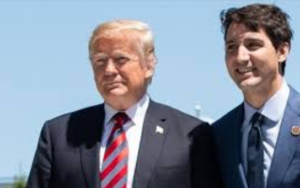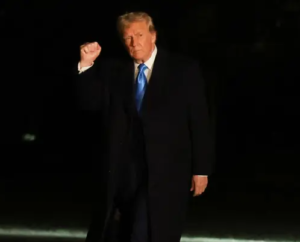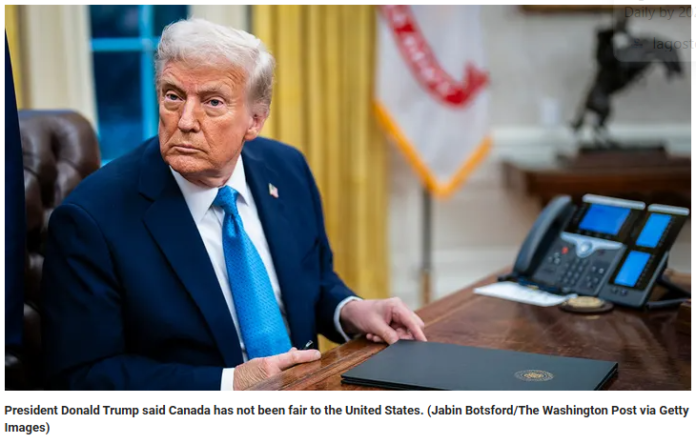By Joke Kujenya
THE LOOMING threat of additional United States tariffs on Canadian imports has been temporarily lifted following last-minute concessions from Canada.
President Donald Trump agreed to a 30-day pause on the 25% tariffs after a phone call with Prime Minister Justin Trudeau, who announced new border security measures in response to U.S. concerns.
Trudeau confirmed the agreement in a post on X, outlining a $1.3 billion border plan that includes deploying additional personnel, upgrading surveillance technology, and appointing a fentanyl czar to combat drug trafficking.
Canada will also reinforce its borders with helicopters and enhanced coordination with U.S. authorities, with nearly 10,000 personnel assigned to border protection.
“We will list cartels as terrorists, ensure 24/7 eyes on the border, launch a Canada-U.S. Joint Strike Force to combat organised crime, fentanyl, and money laundering,” Trudeau stated.
“I have also signed a new intelligence directive on organised crime and fentanyl and we will be backing it with $200 million.”
Trump had warned that Canada and Mexico were not doing enough to curb illegal migration and drug smuggling, particularly fentanyl, into the U.S.
He also claimed that the U.S. subsidises Canada by approximately $200 billion annually.
Following Trudeau’s concessions, Trump agreed to halt the proposed tariffs while both nations work on enforcement strategies.
Before the call with Trudeau, Mexican President Claudia Sheinbaum announced the deployment of 10,000 troops to the U.S.-Mexico border in response to Trump’s tariff threats.

The move came as Trump prepared to impose tariffs on Canada, Mexico, and China, citing national security concerns under the International Emergency Economic Powers Act (IEEPA).
The tariffs were set to take effect at midnight Tuesday, with Canadian and Mexican imports facing a 25% levy, Chinese goods a 10% tariff, and Canadian energy a separate 10% tariff.
In Canada, political leaders condemned the tariffs, with some provincial governments threatening to remove American alcohol from store shelves.
Trudeau encouraged Canadians to prioritise domestic products, writing, “Now is the time to choose products made right here in Canada. Check the labels. Wherever we can, choose Canada.”
Meanwhile, Trump strongly defended his tariff strategy during a press briefing at Joint Base Andrews, saying the move was necessary to protect American industries and national security.
“We need to protect Americans, and it is my duty as President to ensure the safety of all,” he stated. “I made a promise to stop the flood of illegal aliens and drugs from pouring across our borders, and Americans overwhelmingly voted in favour of it.”

Beyond North America, Trump also signalled potential trade penalties against the European Union, citing a $300 billion trade deficit.
“They don’t take our cars, they don’t take our farm products, they take almost nothing,” he argued. “And we take everything from them. Millions of cars, tremendous amounts of food and farm products. The EU is way out of line.”
Meanwhile, Mexico firmly rejected U.S. allegations linking its government to criminal organisations. President Sheinbaum insisted that Mexico remains committed to fighting drug trafficking and violence but called for bilateral cooperation based on mutual respect.
“Mexico does not want fentanyl reaching the United States or anywhere else,” she said. “If the U.S. wants to combat criminal groups, we must work together under shared responsibility, mutual trust, and respect for sovereignty.”
Trump also weighed in on South African policy, threatening to cut off aid following reports of land seizures. He accused the South African government of human rights violations and vowed U.S. action.
“It is a bad situation that the Radical Left Media doesn’t want to mention,” he wrote on Truth Social.
“The United States won’t stand for it. We will act. I will cut off all future funding to South Africa until a full investigation is completed.”
Trump noted that as the 30-day pause on Canadian tariffs begins, businesses and government officials on both sides of the border are closely monitoring developments.





